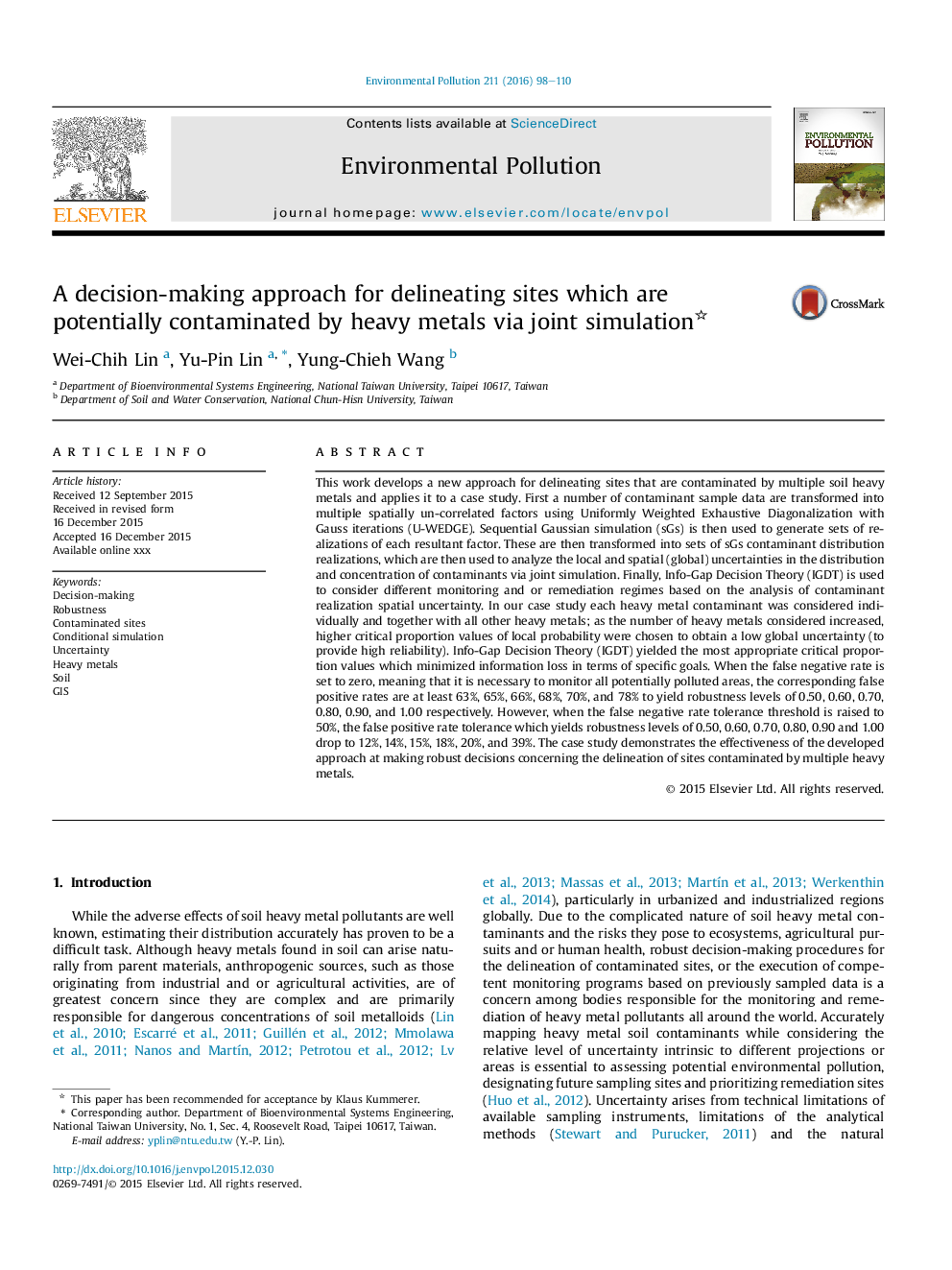| کد مقاله | کد نشریه | سال انتشار | مقاله انگلیسی | نسخه تمام متن |
|---|---|---|---|---|
| 6315477 | 1619162 | 2016 | 13 صفحه PDF | دانلود رایگان |
عنوان انگلیسی مقاله ISI
A decision-making approach for delineating sites which are potentially contaminated by heavy metals via joint simulation
ترجمه فارسی عنوان
یک روش تصمیم گیری برای تعیین سایت هایی که به وسیله شبیه سازی مشترک از طریق فلزات سنگین آلوده می شوند
دانلود مقاله + سفارش ترجمه
دانلود مقاله ISI انگلیسی
رایگان برای ایرانیان
کلمات کلیدی
موضوعات مرتبط
علوم زیستی و بیوفناوری
علوم محیط زیست
شیمی زیست محیطی
چکیده انگلیسی
This work develops a new approach for delineating sites that are contaminated by multiple soil heavy metals and applies it to a case study. First a number of contaminant sample data are transformed into multiple spatially un-correlated factors using Uniformly Weighted Exhaustive Diagonalization with Gauss iterations (U-WEDGE). Sequential Gaussian simulation (sGs) is then used to generate sets of realizations of each resultant factor. These are then transformed into sets of sGs contaminant distribution realizations, which are then used to analyze the local and spatial (global) uncertainties in the distribution and concentration of contaminants via joint simulation. Finally, Info-Gap Decision Theory (IGDT) is used to consider different monitoring and or remediation regimes based on the analysis of contaminant realization spatial uncertainty. In our case study each heavy metal contaminant was considered individually and together with all other heavy metals; as the number of heavy metals considered increased, higher critical proportion values of local probability were chosen to obtain a low global uncertainty (to provide high reliability). Info-Gap Decision Theory (IGDT) yielded the most appropriate critical proportion values which minimized information loss in terms of specific goals. When the false negative rate is set to zero, meaning that it is necessary to monitor all potentially polluted areas, the corresponding false positive rates are at least 63%, 65%, 66%, 68%, 70%, and 78% to yield robustness levels of 0.50, 0.60, 0.70, 0.80, 0.90, and 1.00 respectively. However, when the false negative rate tolerance threshold is raised to 50%, the false positive rate tolerance which yields robustness levels of 0.50, 0.60, 0.70, 0.80, 0.90 and 1.00 drop to 12%, 14%, 15%, 18%, 20%, and 39%. The case study demonstrates the effectiveness of the developed approach at making robust decisions concerning the delineation of sites contaminated by multiple heavy metals.
ناشر
Database: Elsevier - ScienceDirect (ساینس دایرکت)
Journal: Environmental Pollution - Volume 211, April 2016, Pages 98-110
Journal: Environmental Pollution - Volume 211, April 2016, Pages 98-110
نویسندگان
Wei-Chih Lin, Yu-Pin Lin, Yung-Chieh Wang,
